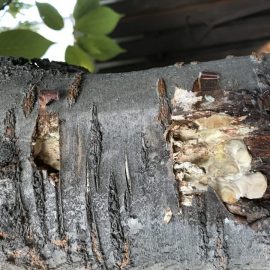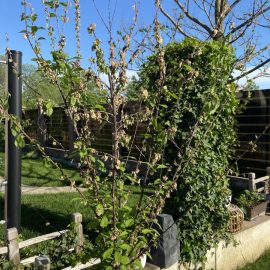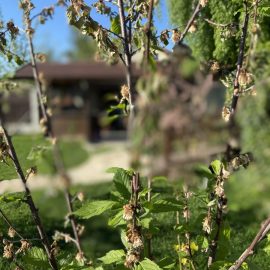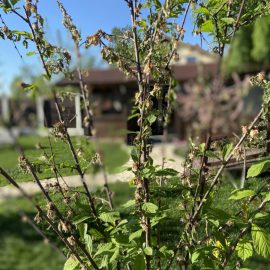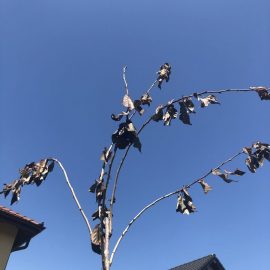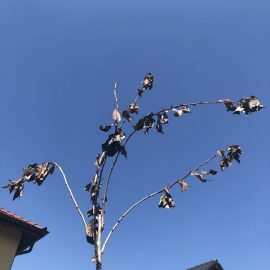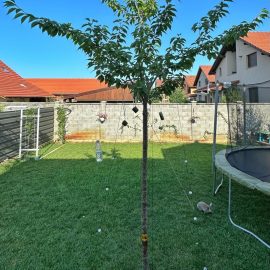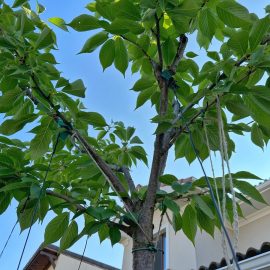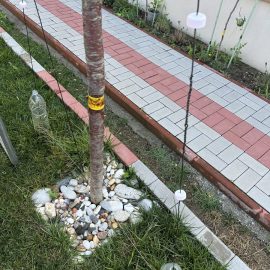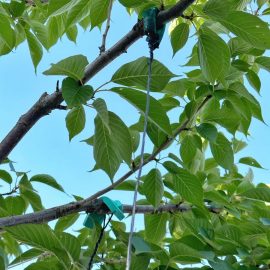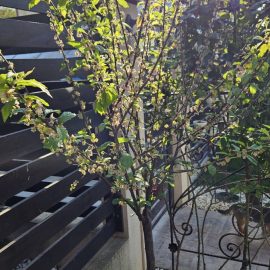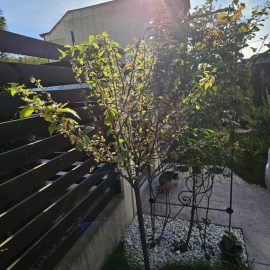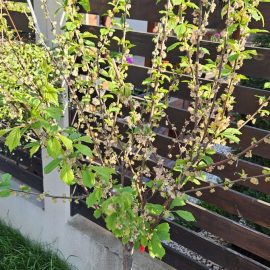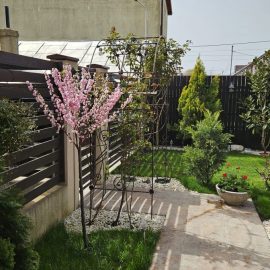Japanese cherry, planting guide and care work
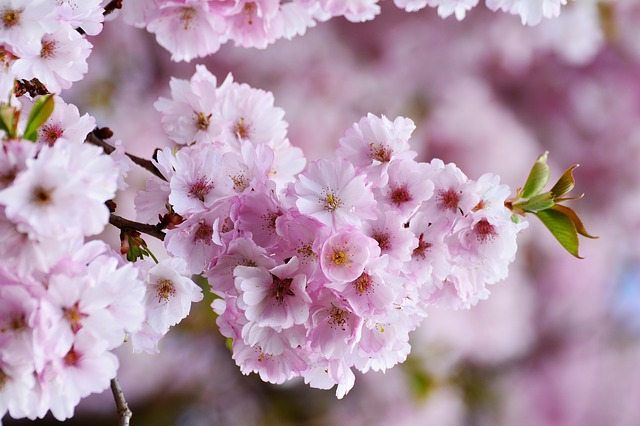
Originally from Asia, the Japanese cherry (Prunus serrulata) grows in the form of a size III tree, reaches a height of 10-15 m, and develops a very wide crown (up to 9 m in diameter, in old trees). The leaves are oval, acuminate, serrated, 6-12 cm long. The flowers are clustered in racemes in groups of 3-5, are white, full and about 4 cm in size. It blooms before foliation, in April-May.
The most common cultivars are:
- ’Amanogawa’ – it is shaped like a column, it is straight and upwards-oriented and it reaches 10 m in height; the flowers are fragrant, light pink, simple or slightly involute.
- ’Hisakura’ – it has a vigorous growth; the flowers are simple (in the old specimens they are semi-double) and pink.
- ‘Kanzan’ – it initially grows straight and upwards-oriented, then it spread and reaches a height up to 8-12 m; the young leaves are reddish, and the flowers are double, large and intensely pink.
- ‘Kiku-shidare-sakura’ – it grows in the form of a shrub, reaching a height of 2.5 m; the branches are pendant, and the flowers are dark pink, double, grouped 3-4 in bouquets.
- ‘Shirotae’ – it has a reduced growth and the branches are arched; the leaves are deeply serrated and in autumn, they turn yellow; the flowers are white, large, simple and fragrant.
- ‘Ukon’ – a variety with yellow-green flowers, double, 4-5 cm in size.
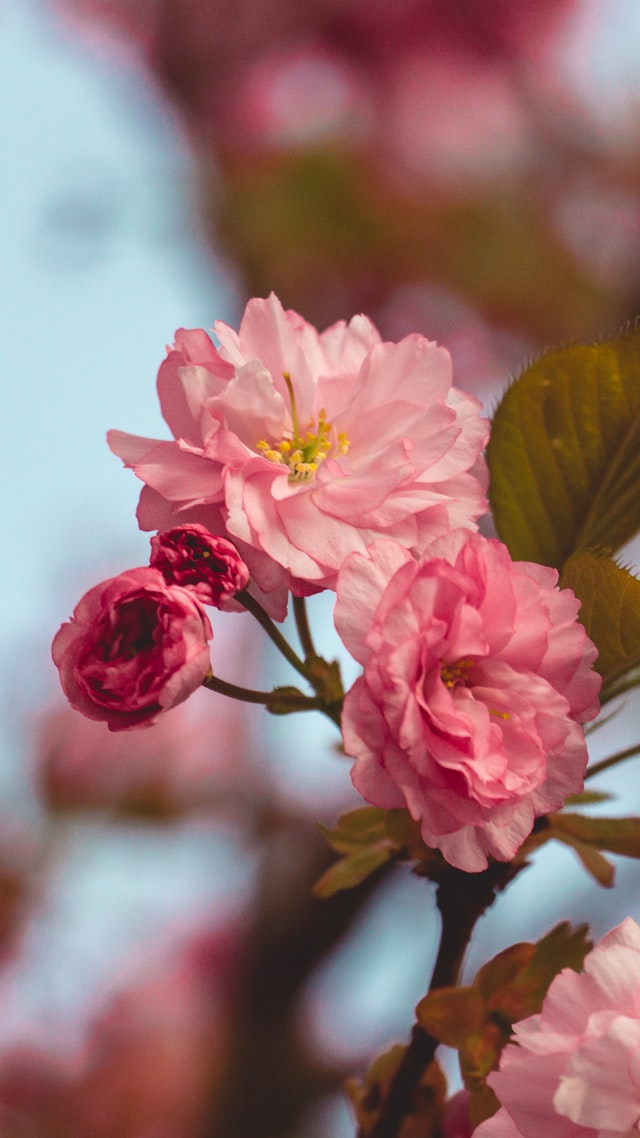
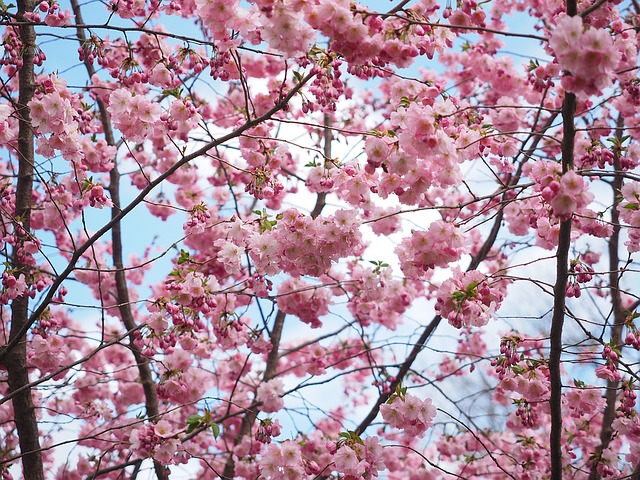
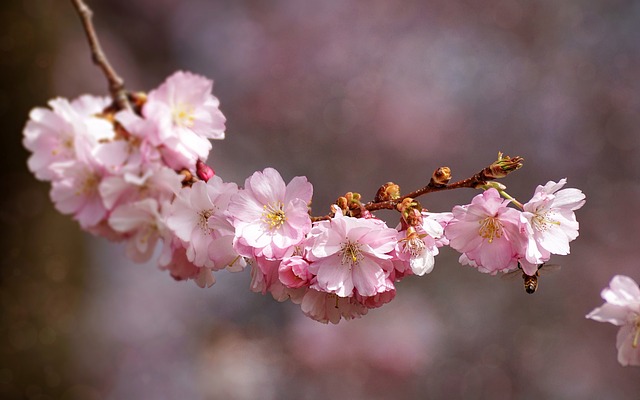
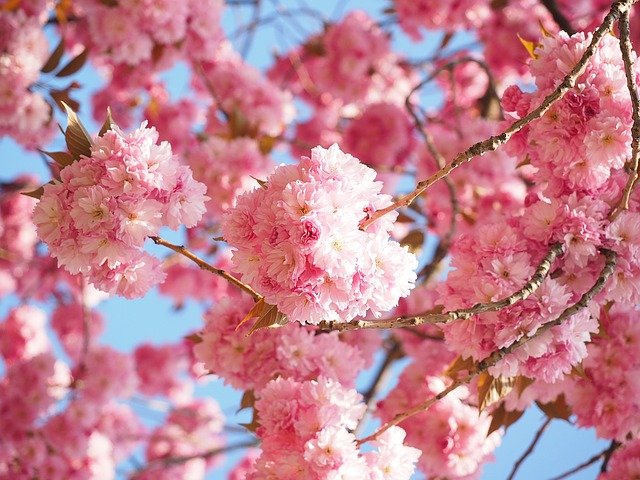
Environmental conditions
The requirements for light are high, preferring sunny places. The Japanese cherry is a thermophilic species, it withstands drought well, but not water stagnation. It prefers loose, fertile soils, rich in humus, but it can also grow quite well in loamy, clayey, or sandy soils.
Care
The Japanese cherry does not require any special care. It is important to ensure adequate humidity, especially during dry periods. For a harmonious development of the plant, annual fertilization with a specific fertilizer is recommended.
Recommended products
-
You can find products on a different store
Change Store -
You can find products on a different store
Change Store -
You can find products on a different store
Change Store -
You can find products on a different store
Change Store -
You can find products on a different store
Change Store -
You can find products on a different store
Change Store -
You can find products on a different store
Change Store -
You can find products on a different store
Change Store -
You can find products on a different store
Change Store -
You can find products on a different store
Change Store -
You can find products on a different store
Change Store -
You can find products on a different store
Change Store -
You can find products on a different store
Change Store -
You can find products on a different store
Change Store -
You can find products on a different store
Change Store -
You can find products on a different store
Change Store -
You can find products on a different store
Change Store -
You can find products on a different store
Change Store -
You can find products on a different store
Change Store -
You can find products on a different store
Change Store -
You can find products on a different store
Change Store -
You can find products on a different store
Change Store -
You can find products on a different store
Change Store -
You can find products on a different store
Change Store
Pruning
Shape correction cuts should be done in early spring when the plant is still in vegetative dormancy, but it also withstands “green” cuts, in summer. It is recommended to use mastic to avoid infection with pathogens.
Recommended products
-
You can find products on a different store
Change Store -
You can find products on a different store
Change Store -
You can find products on a different store
Change Store -
You can find products on a different store
Change Store -
You can find products on a different store
Change Store -
You can find products on a different store
Change Store -
You can find products on a different store
Change Store -
You can find products on a different store
Change Store -
You can find products on a different store
Change Store -
You can find products on a different store
Change Store -
You can find products on a different store
Change Store -
You can find products on a different store
Change Store -
You can find products on a different store
Change Store -
You can find products on a different store
Change Store -
You can find products on a different store
Change Store -
You can find products on a different store
Change Store -
You can find products on a different store
Change Store -
You can find products on a different store
Change Store -
You can find products on a different store
Change Store -
You can find products on a different store
Change Store -
You can find products on a different store
Change Store -
You can find products on a different store
Change Store -
You can find products on a different store
Change Store -
You can find products on a different store
Change Store
Recommended products
-
You can find products on a different store
Change Store -
You can find products on a different store
Change Store -
You can find products on a different store
Change Store -
You can find products on a different store
Change Store -
You can find products on a different store
Change Store -
You can find products on a different store
Change Store -
You can find products on a different store
Change Store -
You can find products on a different store
Change Store -
You can find products on a different store
Change Store -
You can find products on a different store
Change Store -
You can find products on a different store
Change Store -
You can find products on a different store
Change Store -
You can find products on a different store
Change Store -
You can find products on a different store
Change Store -
You can find products on a different store
Change Store -
You can find products on a different store
Change Store -
You can find products on a different store
Change Store -
You can find products on a different store
Change Store -
You can find products on a different store
Change Store -
You can find products on a different store
Change Store -
You can find products on a different store
Change Store -
You can find products on a different store
Change Store -
You can find products on a different store
Change Store -
You can find products on a different store
Change Store
Planting
The Japanese cherry is planted, preferably, in autumn, during the vegetative dormancy period, but it can be planted during other periods of the year if the plant has a bundle of earth surrounding its roots. The soil mustn’t be frozen.
Propagation
It is propagated through grafting, in spring, under the bark, on the rootstock of Prunus avium.
Diseases and pests
The Japanese cherry is most commonly attacked by the following diseases and pests:
The brown rot blossom blight (Monilinia laxa) attacks the branches, leaves, flowers, and fruits. The attacked leaves and flowers wither, then turn brown and dry, but remain on the branches. To control it, you have to carry out fungicide treatments. It is also recommended to cut and destroy the affected branches.
Recommended products
-
You can find products on a different store
Change Store -
You can find products on a different store
Change Store -
You can find products on a different store
Change Store -
You can find products on a different store
Change Store -
You can find products on a different store
Change Store -
You can find products on a different store
Change Store -
You can find products on a different store
Change Store -
You can find products on a different store
Change Store -
You can find products on a different store
Change Store -
You can find products on a different store
Change Store -
You can find products on a different store
Change Store -
You can find products on a different store
Change Store -
You can find products on a different store
Change Store -
You can find products on a different store
Change Store -
You can find products on a different store
Change Store -
You can find products on a different store
Change Store -
You can find products on a different store
Change Store -
You can find products on a different store
Change Store -
You can find products on a different store
Change Store -
You can find products on a different store
Change Store -
You can find products on a different store
Change Store -
You can find products on a different store
Change Store -
You can find products on a different store
Change Store -
You can find products on a different store
Change Store
Aphids colonize the tips of young branches and the underside of the leaves. The attacked leaves twist. Aphids secrete a sticky substance on the plant, which favors the appearance of sooty mold.
Caterpillars feed intensely on the leaves of the plant. Young caterpillars bite the leaves leaving one of the epidermis intact. Mature caterpillars eat the entire surface of the leaf, leaving only the ribs and petiole intact. To control these pests, you should carry out treatments with specific insecticides.
Recommended products
-
You can find products on a different store
Change Store -
You can find products on a different store
Change Store -
You can find products on a different store
Change Store -
You can find products on a different store
Change Store -
You can find products on a different store
Change Store -
You can find products on a different store
Change Store -
You can find products on a different store
Change Store -
You can find products on a different store
Change Store -
You can find products on a different store
Change Store -
You can find products on a different store
Change Store -
You can find products on a different store
Change Store -
You can find products on a different store
Change Store -
You can find products on a different store
Change Store -
You can find products on a different store
Change Store -
You can find products on a different store
Change Store -
You can find products on a different store
Change Store -
You can find products on a different store
Change Store -
You can find products on a different store
Change Store -
You can find products on a different store
Change Store -
You can find products on a different store
Change Store -
You can find products on a different store
Change Store -
You can find products on a different store
Change Store -
You can find products on a different store
Change Store -
You can find products on a different store
Change Store














































































































































































































































































































































































































































